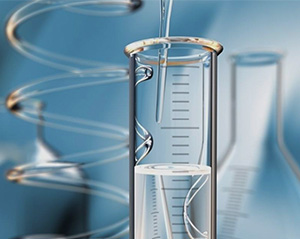The addition of fungicides is a common and effective method to control the growth of microorganisms
Release date:2022-05-17 Author:翊成网络g Click:
The addition of fungicides is a common and effective method to control the growth of microorganisms. Bactericides [1] are usually divided into oxidative and non-oxidative types. Oxidative fungicides generally include ozone, chlorine-based fungicides, chlorine dioxide, bromine-based fungicides, etc. The typical feature is that the fungicides themselves are oxidative or hydrolyzed. It has oxidizing properties, and this type of fungicide has the characteristics of rapid sterilization, and is often the first choice for sterilization in various fields. Non-oxidizing fungicides generally include quaternary ammonium salts, quaternary phosphonium salts, glutaraldehyde, isothiazolinone, etc. These fungicides are generally used as supplements to oxidizing fungicides, and are alternately used for microbial control. As chemicals, some fungicides have potential safety hazards in the process of production and transportation, and some fungicides increase the COD of water after use, which is not friendly to the environment.

With the maturation of electrode materials and engineering technology, electrolytically active chlorine sterilization, as a "clean technology", is expected to develop rapidly in water bodies containing chloride ions. Electrolytic active chlorine sterilization does not require the addition of chemical agents, and generates effective chlorine with bactericidal effect through continuous electrolysis of chloride ions in water. The technology does not cause an increase in the concentration of chloride ions in the water, thereby reducing the corrosion of water quality to equipment and pipelines, and has the advantages of high efficiency, low cost, and environmental friendliness.
Active chlorine is the sum of the three forms of Cl2, HClO and ClO-, and the ratio of HClO and ClO- is determined by the pH of the electrolyte solution [2]. When the Cl-containing electrolyte solution is electrolyzed, the anode generates hypochlorous acid or hypochlorite, and the side reaction of oxygen evolution occurs. Cl- is oxidized at the anode to form Cl2 (formula 1), and Cl2 dissolves in water to form hypochlorous acid and hydrochloric acid (formula 2). There is a dynamic equilibrium between hypochlorous acid and hypochlorite (formula 3). The relative content varies depending on the pH of the electrolyte solution. The bactericidal effect of active chlorine depends on the amount of atomic oxygen released (Equations 4, 5). The Cl- consumed by electrolysis to generate active chlorine is regenerated through the bactericidal process [2]. Therefore, when electrolytically active chlorine is used for sterilization, the chemical composition of the electrolyte solution is basically unchanged.
The hypochlorite or hypochlorous acid produced by the electrolysis of water containing chloride ions can be used for sterilization of drinking water, industrial circulating cooling water, seawater and medical water. Electrolyzing water with high chloride ion content (such as seawater) or adding hydrochloride to water can produce high concentrations of active chlorine, and its bactericidal effect has been generally recognized [3-5], but high concentrations of chloride ions and active chlorine will cause water quality problems. increased corrosiveness. In order to solve the problem of enhanced water corrosiveness, researchers began to study electrolytic sterilization of solutions with extremely low Cl- concentration in the 1990s [6-9].

 Language
Language






 选择语言
选择语言

 苏公网安备 32100302010866号
苏公网安备 32100302010866号